Safety and comfort must guide every choice within a senior living space. Handrails and grab bars are essential features that support secure and independent living. These simple yet powerful additions provide physical support, reduce stress related to movement, and assist with daily routines. Each installation reflects a commitment to both dignity and care. Here, we share how handrails and grab bars improve the quality of life in senior citizen flats in Bangalore: Preventing falls and injuries As age advances, balance may weaken and reaction time may slow. Wet floors, loose rugs, or narrow stairways create serious risks. In bathrooms, hallways and staircases, handrails and grab bars provide a firm surface for support. This extra stability reduces the chance of slipping or tripping. In bathrooms, grab bars near the toilet, bathtub and shower area become especially important. Wet floors and smooth tiles make these spaces more dangerous. A well-placed bar gives an anchor for safe movement when sitting, standing or stepping. Promoting independent movement Mobility often changes with age, but the desire for independence remains strong. Handrails and grab bars allow each resident to move through the home with greater ease. Along corridors, beside beds or near seating areas, these aids help with standing, walking and shifting positions. With grip support in key areas, seniors complete daily routines more freely. A person may reach the bathroom or kitchen without needing assistance. This freedom improves both emotional well-being and physical strength. Building confidence in everyday actions Even without major health issues, fear of falling can reduce confidence. Worry about injury or pain may lead to hesitation and reduced activity. Handrails and grab bars provide reassurance and increase trust in one’s own abilities. Knowing that help stands within reach encourages daily movement. Simple tasks such as bathing, getting dressed or walking to the window become easier. This sense of security supports better mental health and encourages regular physical activity. Supporting recovery and rehabilitation After surgery or a medical condition, safe movement becomes even more important. Balance and strength may take time to return. Handrails and grab bars assist during this phase of recovery. Grab bars near the bed, toilet or entrance help with small movements during rehabilitation. Seniors may rise more easily, shift weight more confidently and resume daily activities more quickly. These aids reduce the chance of further injury and promote steady progress. Adjustable placement for personal needs Each individual has different requirements. Some need support in the bathroom, others in the kitchen or hallway. Grab bars and handrails can be installed in any room and adjusted to suit specific needs. A corridor may need a full-length rail. A bedroom may need a bar next to the bed. Different finishes and styles allow for smooth design that matches the rest of the flat. Whether choosing stainless steel, textured plastic or a soft-colour coating, the result combines function with visual appeal. Creating peace of mind for families Family members often worry about the safety of elderly parents or relatives. The presence of handrails and grab bars provides peace of mind. These aids help reduce the risk of injury and show that care and planning have guided every decision. Families can feel reassured that a resident can move through the home with greater safety and less need for assistance. These tools show respect for privacy, dignity and independence. Modern senior citizen flats must reflect the needs of those who live in them. True age-friendly design means more than wide doorways or natural light. It includes strong, secure features that support safety at every step. Handrails and grab bars form a central part of that design. With these tools in place, a home becomes a safer, more empowering space. Looking for premium senior citizen homes in Bangalore with thoughtful design? At Serene Amara by Columbia Pacific, safety and comfort form the core of every design decision. Each feature of the community reflects a deep understanding of senior living needs, ensuring that residents enjoy a secure, accessible, and dignified lifestyle. To know more about our senior living communities, call us at +91-8884555554.
Read MoreArticles - Know More About Senior Living retirement communities
The importance of handrails and grab bars in senior citizen flats in Bangalore
August 4, 2025
Categories : Retirement living | Senior Living
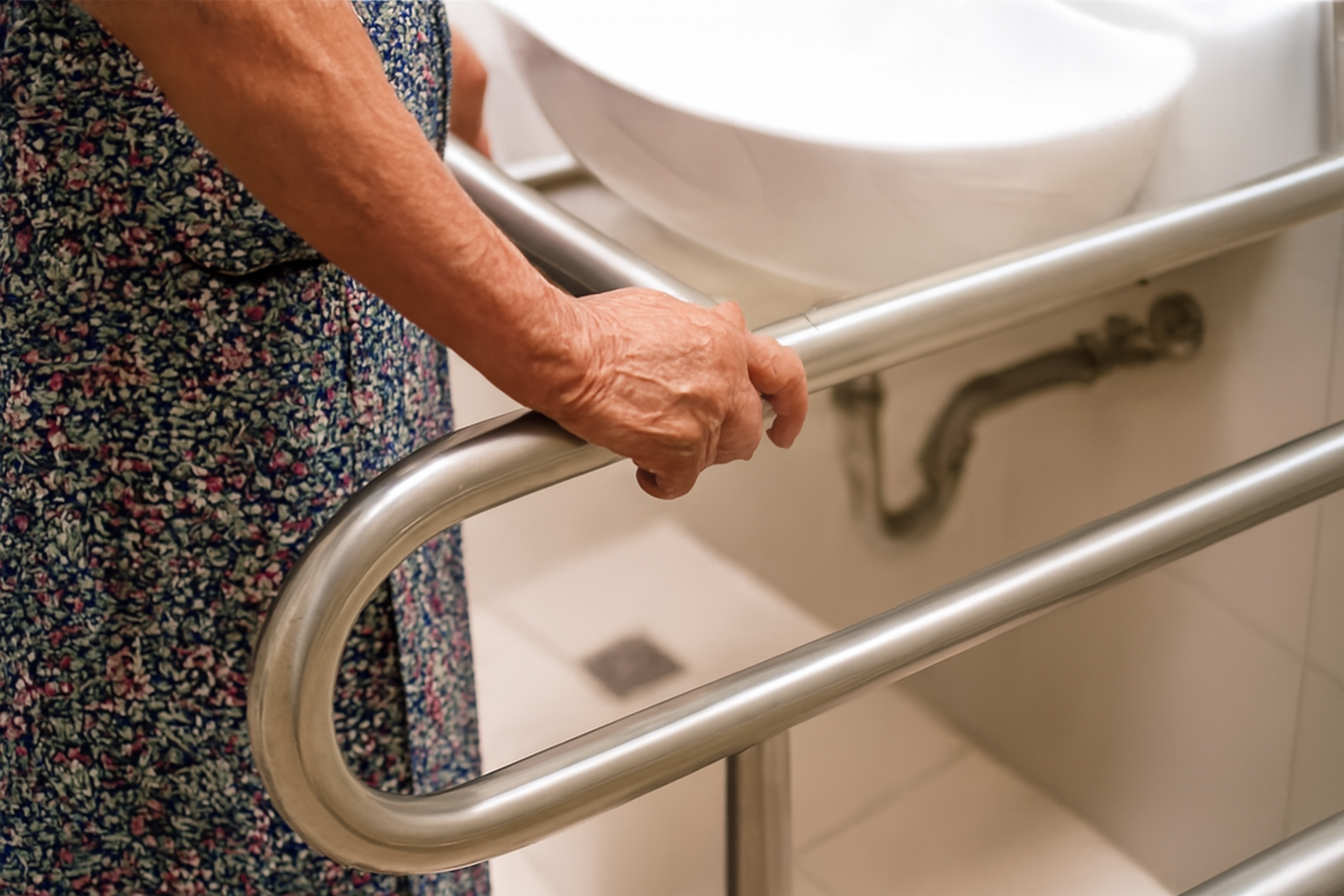
How to organise events and activities at senior residential communities?
August 1, 2025
Categories : Retirement living | Senior Living
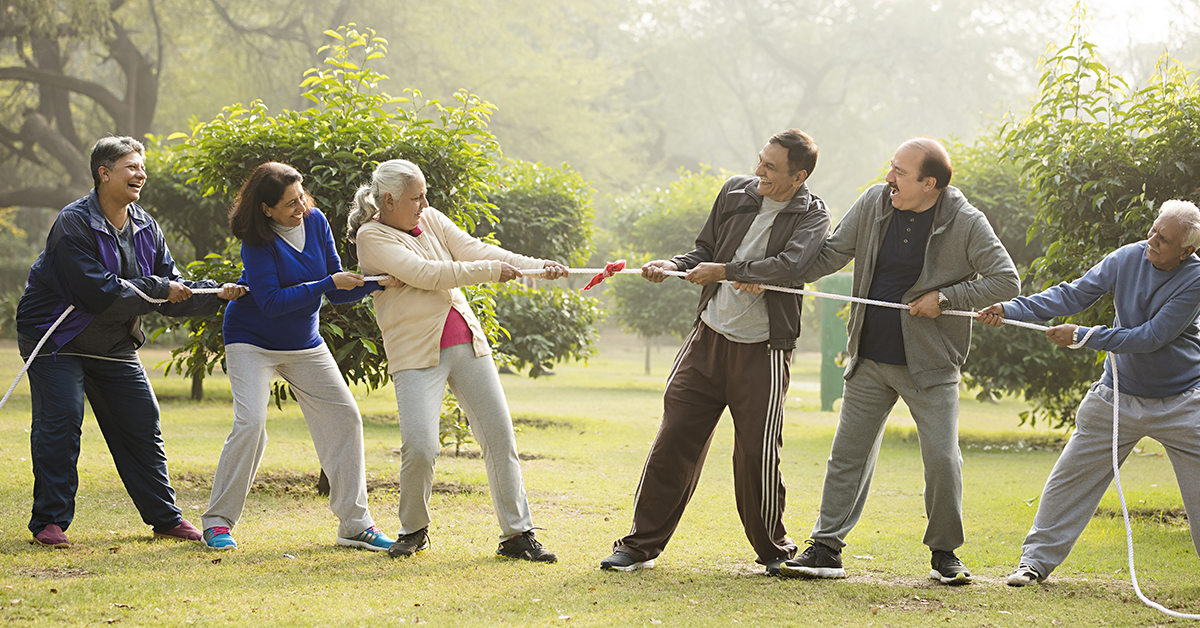
Did you know that daily activities in a senior home can improve health, lift moods, and bring people closer together? Many seniors enjoy peaceful days, but regular events add purpose and fun. A good plan brings back fond memories, starts new friendships, and helps each person feel part of a caring community. Every person has a story, a skill, or a song worth sharing. Simple activities such as telling tales, painting flowers, or listening to music can brighten the day. When events match each person’s interests and comfort, joy becomes easier to find. Here, we share easy ways to plan events with meaning, fun and respect. Understand the interests and needs of each person Start by asking simple questions. What hobbies feel enjoyable? What activities feel easy or hard? Each person may have different likes—some enjoy reading, others like talking, drawing, or music. Some move with ease, others use a walker or need to sit more. Write down each answer and plan events that match each person’s comfort and interest. Celebrate festivals and cultural traditions Festivals bring joy and warm memories. Many in India remember Diwali, Holi, Pongal and other special days. Plan small celebrations for each one. Decorate the space with lights, flowers or colours. Offer simple dishes such as sweets or snacks. Invite each person to help by hanging decorations, lighting a lamp or sharing a story. These traditions give a strong feeling of belonging and joy. Support good health with safe activities Health activities keep the body and mind strong. Plan light movement classes, such as chair yoga or gentle stretching. Teach slow breathing for calm and focus. Invite doctors or nurses to speak about food, sleep and exercise. Plan check-up days to test blood pressure, sugar and weight. Create small hobby groups Friendship grows through shared hobbies. Form small groups for reading, gardening, or making things by hand. Give simple tools and clear steps. One group may grow flowers in small pots, another may enjoy story time with short books. Craft sessions can include drawing, colouring or folding paper. No need for perfection—fun and peace matter more than results. Offer easy lessons and workshops Learning feels good at any age. Plan short lessons on simple skills. Show how to use a phone, send a message, or search for photos. Use large screens or printed notes with clear words. Cooking workshops may include old family recipes or easy new snacks. Invite someone to guide poetry writing or story sharing. Each lesson gives joy, focus and a fresh goal. Give ways to help others Invite nearby schools to visit. Ask each resident to share a story or song with children. Set up time to read books aloud or show crafts. A few minutes with young guests brightens the day. Plan fun and relaxing events Joy and fun lift spirits. Arrange film nights with clear sound and soft seating. Provide popcorn or fruit juice. Music sessions may include favourite songs, hand drums or sing-alongs. Invite dancers or musicians to perform short shows. Keep each event short and sweet. Smiles and laughter will follow. Ask for feedback often Good planning needs feedback. After each event, ask simple questions. Did this feel fun? Was this too hard or too easy? Use smiley faces, stickers or short notes. Change future events based on answers. Give each person a voice in shaping the plan. That voice matters most. Keep plans clear and simple Post a calendar with bright colours in a shared room. Give each person a copy with easy words. Mark important days and list helpers for each task. Prepare materials before time. Check chairs, lighting and sound. Ask staff or family to lend a hand where needed. Smooth plans bring peace and comfort. Make every event safe Choose places with ramps, wide doors and steady seats. Clear any clutter. Use soft lights, not harsh ones. Offer water nearby. Keep a first-aid kit ready. Staff must stay alert and gentle. Safety shows love and care. Looking for flats for senior citizens in Bangalore that promote active ageing? At Serene Amara by Columbia Pacific, we believe in creating a life filled with ease, dignity and connection. Every detail reflects care—from personalised service to thoughtfully designed spaces that support well-being, joy and independence. Our senior residential communities offer a wide range of amenities designed to support physical, emotional and social well-being: A gym specially equipped for seniors, offering safe and guided exercise options A games room featuring table tennis, pool, carrom, chess, board games and cards for shared enjoyment Spa facilities to promote rest, relaxation and overall calm Dedicated spaces for yoga and meditation, allowing gentle movement and peaceful focus A cosy reading lounge near the lobby, ideal for quiet reading or informal group discussions A multi-purpose space designed for learning sessions, celebrations and community gatherings A walking and jogging track set in landscaped green surroundings A podium-level area created for social events, friendly conversations and a sense of togetherness To know more about our amenities, call us at +91-8884555554.
Read MoreHow to enjoy slow travel after retirement? Tips by one of the best senior citizen apartments in Bangalore
July 31, 2025
Categories : Retirement living | Senior Living
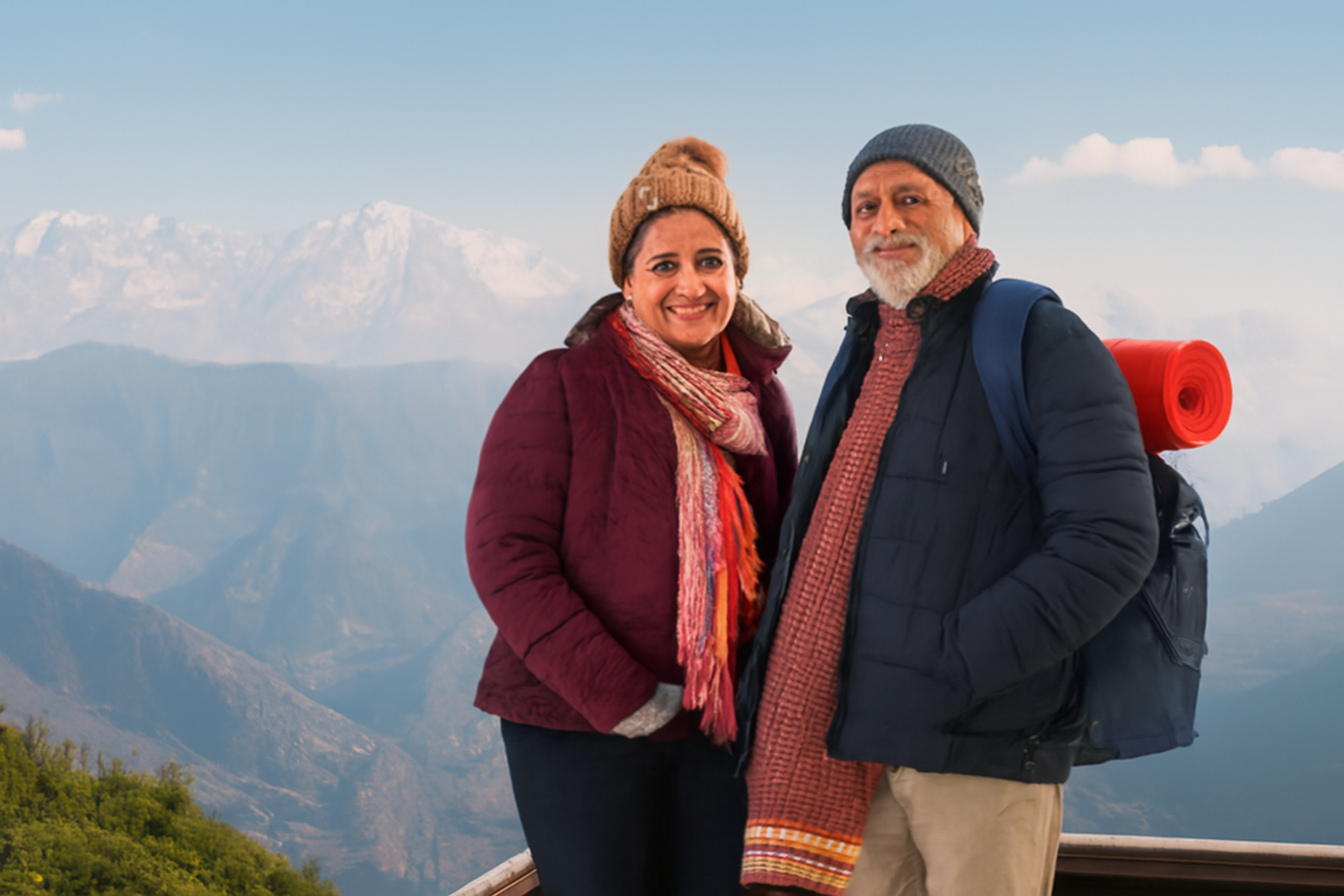
After retirement, many seniors find new freedom in living life at a slower pace. Slow travel offers a chance to explore the world without the rush and stress of traditional holidays. With a little planning and care for their well-being, seniors can turn travel into a rewarding and enriching part of their lives. Here, we share some useful tips to guide seniors on a journey filled with comfort, engagement, and true enrichment. Choose comfortable destinations Seniors should look for places with gentle terrain, good accessibility, and strong support systems. Calm spots such as coastal villages, green countryside, or peaceful lakes are ideal. A warm but mild climate makes outdoor walks and city visits enjoyable. Safe public transport, easy-to-walk paths, and well-kept streets help with movement. A well-developed tourist area also offers medical care, accessible stays, and kind staff. Stay longer at each destination Spending more time in one place helps seniors feel part of the local life. Instead of rushing from one site to another, they should choose one or two spots and stay for days or weeks. This gives time to enjoy local food, learn customs, and notice daily routines. Watching a market change over time or seeing the same harbour in the morning light adds depth. Staying longer also allows for new friendships. Talking with café owners or neighbours can lead to shared stories and kind invites. Prioritise health and wellness Good health brings joy to travel. Seniors should stay active in simple ways each day. Walks in parks, light stretching, morning yoga, or swimming in calm water all help the body stay strong. Many places now offer wellness services such as massages, group exercises, or meditation. These support both body and mind. Pack light and plan carefully Smart planning makes travel smoother. Seniors should pack only what is useful and light. Items that serve many uses, such as a scarf, are helpful. Wearing layers helps with changes in temperature. Shoes must feel good and support the feet. A small bag with easy access keeps things in order. Health plans are key. Bring enough medicine, plus a little extra, and carry the right papers. Learn where to find doctors and clinics. Keep contact numbers, insurance details, and a first aid kit close. With good planning, there is less worry and more joy. Enjoy leisurely activities Slow travel lets seniors enjoy quiet and creative moments. Writing in a journal, sketching, or taking photos brings joy and keeps memories. Sitting in a park to watch birds or people can be peaceful. Museums can be visited more than once to take in more meaning. Garden lovers can explore local parks and learn about plants. Nature walks can show animals and give time to think. These gentle activities match a slower pace and deepen the bond with each place. Stay connected with loved ones Seniors should share photos, send messages, or make video calls with friends and family. These small actions help loved ones feel part of the journey, even from far away. Talking often brings comfort and reminds everyone that they are close at heart. Sharing pictures or updates through group chats or online photo albums keeps people connected. These tools also help with travel questions, such as checking times or finding places. For example, a family member can help look up a train schedule or translate a sign. Staying in touch makes the trip more enjoyable and offers support when needed. For seniors who enjoy travel, having a secure and comfortable base is essential. Choosing senior citizen apartments in Bangalore provides that peace of mind. These communities offer safe, well-maintained environments with support services that help seniors feel confident while away or upon return. With trusted staff and a strong community, residents can explore the world knowing their home is in good hands. When not travelling, they enjoy restful spaces, wellness facilities, and friendly company. At Serene Amara by Columbia Pacific, life is designed with seniors in mind. The focus is on comfort, care, and ease. With open spaces and a welcoming club, it offers the chance to meet like-minded people and enjoy daily life. To know more, call us at +91-8884555554.
Read MoreSeniors’ diet: How to reduce salt and sugar intake?
July 30, 2025
Categories : Retirement living | Senior Living

Excess salt and sugar in the diet can lead to serious health problems, especially for seniors. However, reducing salt and sugar can be tough, especially when Indian cuisine is so rich in strong and familiar flavours. The good news is that with simple steps, seniors can cut down on these ingredients while still enjoying tasty, satisfying meals. Here are some easy and effective ways to reduce salt and sugar in everyday cooking, without giving up the joy of flavourful food. Choose natural alternatives One of the simplest ways to cut back on salt and sugar is by using natural, healthier alternatives. Salt: Instead of adding more salt, seniors can use spices and herbs to bring out the taste of food. Cumin, coriander, turmeric, ginger, garlic, and lemon juice can all add depth and richness to a dish. Spices such as hing (asafoetida) and amchur (dried mango powder) offer a tangy flavour that can reduce the need for added salt. Sugar: Natural sweeteners such as jaggery, honey, and dates are good substitutes for refined sugar. Take it slow If someone is used to a lot of salt and sugar, cutting it out all at once may make food seem dull. Instead, it is better to reduce these ingredients slowly. For example, if a recipe calls for a full teaspoon of salt, it can be cut to three-quarters of a teaspoon. Over time, the taste buds will adapt, and the lower amount will feel normal. This gradual change helps maintain the enjoyment of meals while moving towards better health. Use fruits for natural sweetness Instead of having sugary desserts after meals, seniors can enjoy fruits. Fresh fruit or a simple fruit salad can provide a sweet end to a meal without added sugar. Fruits such as mangoes, bananas, apples, and berries are naturally sweet and full of fibre and vitamins. They help keep digestion healthy and provide energy. Flavour with spices, herbs, and citrus Spices and herbs have always been central to Indian cooking. They are not just for flavour but can also help make meals healthier. Spices and herbs: Cardamom, cinnamon, and saffron can make dishes taste sweet without any added sugar. For savoury dishes, cumin, coriander, black pepper, and turmeric can bring out strong flavours without extra salt. Citrus: Adding lemon juice or lime zest can lift the flavour of many dishes. It works especially well in salads, chutneys, and dals. A few drops of lemon on sabzi or rice can make it taste fresh and lively, reducing the need for salt. Make it a habit By using these small changes, seniors can build new habits that protect their health while keeping meals enjoyable. The goal is not to give up the foods they love but to find ways to make them better for the body. With time and patience, even small changes can lead to big results. Healthy eating can still be full of flavour, warmth, and satisfaction, especially when guided by care and tradition. At Serene Amara by Columbia Pacific, healthy living is part of everyday life. With thoughtfully planned meals, expert care, and a warm community atmosphere, seniors can enjoy a lifestyle that supports their well-being. Located in India and designed for comfort, safety, and social connection, our senior living community offers the perfect setting to enjoy your golden years.
Read MoreOvercoming reluctance to eat healthy: Tips for seniors living in retirement homes for NRIs in India
July 29, 2025
Categories : Retirement living | Senior Living
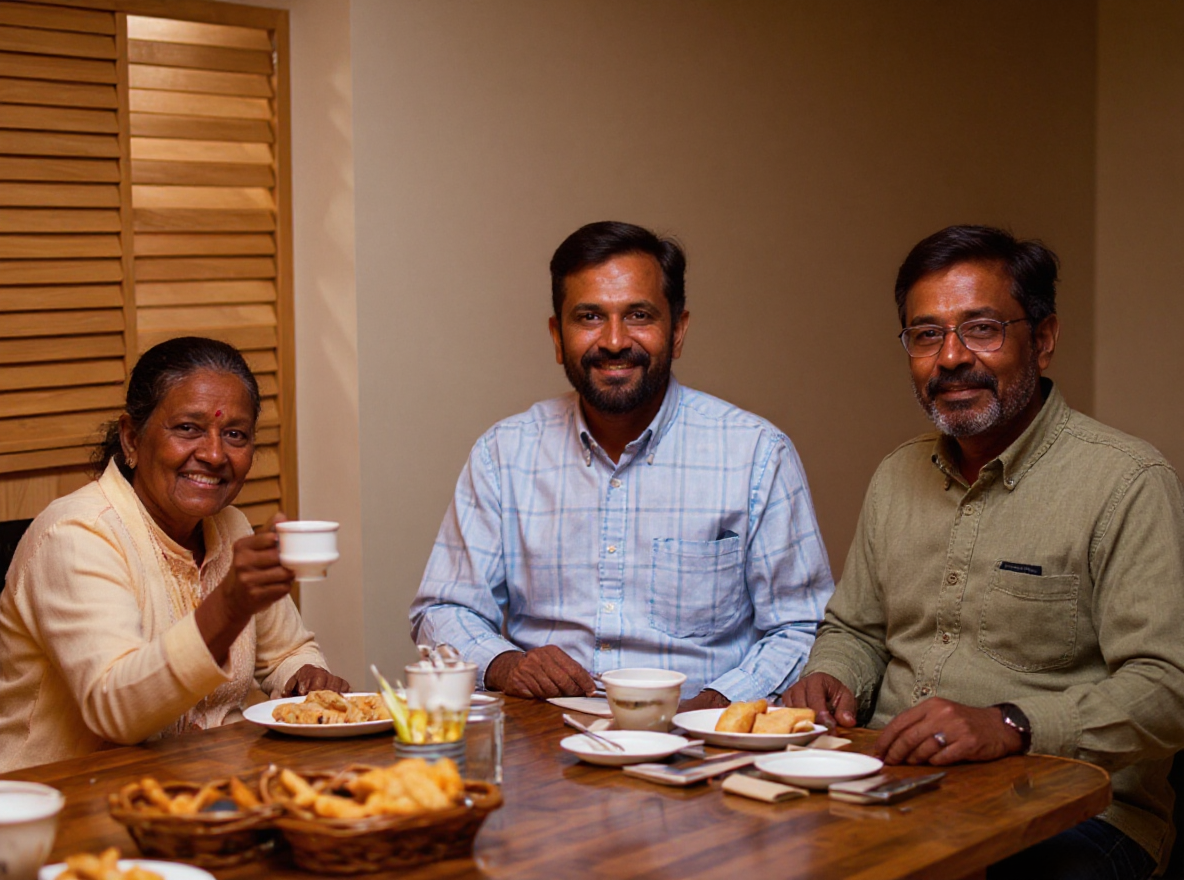
For many seniors, changing their dietary habits can prove difficult due to their preferences, a lifetime of established routines, or a strong sense of nostalgia for traditional foods. However, with a mindful and supportive approach, seniors can gradually become more open to adopting healthier eating habits. This transition, though often gradual, can lead to improved well-being and overall health. Below are some simple yet effective tips to help seniors make this important dietary transition. 1. Seniors should begin with small changes. Rather than attempting to overhaul their entire diet at once, they ought to start with manageable adjustments. They might consider replacing fried snacks with baked alternatives or including a piece of fresh fruit in their breakfast routine. Introducing such minor changes can yield significant health benefits over time without being overwhelming. A gradual approach allows seniors to incorporate healthier choices into their daily routine in a way that feels natural and sustainable. 2. Taste and texture should not be ignored. Many seniors resist healthier food options because they perceive such choices as bland or unappealing. However, nutritious food does not have to lack flavour or enjoyment. Seniors should consider enhancing their meals with aromatic spices such as turmeric, cumin, coriander, and ginger. These can provide vibrant flavours that make meals more enjoyable. 3. Mealtimes should become social occasions. Sharing meals with others can transform dining into a more enjoyable and engaging experience. Seniors should take part in communal dining experiences within their retirement communities and use this time to connect with others. Social interaction during meals can create a supportive and positive environment, often encouraging seniors to try new, healthier food options. Observing others enjoying a nutritious dish might inspire them to give it a try as well – this makes the process of dietary change more appealing and less intimidating. 4. Involvement in meal planning is crucial. Seniors should actively communicate their dietary preferences and culinary ideas to the retirement home staff or kitchen team. By suggesting recipes and sharing their input on meals, they can feel more in control of their dietary choices. This level of involvement ensures that their personal tastes are acknowledged while also introducing new, healthier dishes. Participating in the decision-making process helps seniors feel valued and respected, which in turn increases their willingness to embrace dietary changes. 5. Seniors should educate themselves about the benefits of healthy foods. A deeper understanding of how different foods support health may motivate seniors to explore new dietary options. Seniors should seek information from trusted sources, including caregivers and dietitians, regarding the benefits of particular ingredients. A supportive environment and a patient, respectful approach can go a long way in helping seniors embrace a healthier lifestyle that supports their overall well-being. For those planning their next chapter, it is wise to consider living in a place that supports this lifestyle. Choosing to buy retirement homes in India can offer a safe, caring, and health-focused environment. These communities often provide nutritious meals, social dining spaces, and staff who listen to residents’ needs. Seniors can enjoy comfort, care, and a sense of belonging. Retirement homes for NRI in India add another layer of comfort by blending modern care with cultural familiarity. They allow seniors to stay connected to their roots while enjoying world-class facilities. With well-planned support systems, these homes encourage a healthy and happy life. Looking to buy retirement homes for NRIs in India? Explore our senior homes for NRIs. Coming back to your motherland for retirement can feel like returning home in every way. Here, you can enjoy warm conversations, share stories, make new friends, and create new memories every day. Whether you live abroad and want a safe, caring place for your parents, or you plan to return and enjoy your own retirement in comfort, our senior homes for NRIs in India offer everything you need. Over time, we have created a way of life that goes beyond routine. We believe retirement should be full of freedom, fun, and meaning—not just fixed schedules and quiet corners. At our senior living communities, you become part of a family. You live in a place filled with culture, care, support, and heartfelt connections.
Read MoreThe Silver Wave Is Here: Is India Ready for Its 192 Million Seniors?
June 24, 2025
Categories : articles

India is ageing, and rapidly. In a country that has traditionally celebrated ageing within the nurturing environment of joint families and close-knit communities, the realities of today are strikingly different. With rising urbanisation, evolving family structures, and increasing life expectancy due to medical advancements, the needs of our senior citizens have undergone significant changes. Senior care in India can no longer be seen as a matter of personal responsibility alone. It is, in fact, a national policy priority, one that needs robust infrastructure, forward-thinking planning, and long-term commitment to keep pace with our changing demographics. From Niche to Necessity Over the past decade, we have seen a growing awareness around the importance of senior care. What was once considered a niche or a luxury lifestyle segment is now being recognised as essential. In 2011, India had around 104 million citizens over the age of 60. By 2031, this number is expected to jump to 192 million, according to the Ministry of Statistics and Programme Implementation (MoSPI). This is a massive shift. It’s what experts are calling “The Silver Wave”, and the question we must ask ourselves is: Are we ready? Many Indian cities are not designed for seniors. From inaccessible public transport systems to poorly maintained pedestrian pathways and limited healthcare centres within close range, urban planning has rarely considered the unique requirements of older adults. As per a report by HelpAge India, 43% of elders in urban areas feel unsafe navigating the city on their own. That number isn’t just a statistic; it reflects a serious oversight in the way we build our environments. Breaking the Stereotypes Around Senior Living One of the biggest challenges the sector faces is perception. Senior living is often confused with old-age homes or institutions that come with outdated stereotypes. But modern senior living is about independence with support, autonomy with access. The best communities focus on enabling seniors to lead full, active lives while being equipped with support systems that can step in when needed. This misperception also bleeds into policy. Government support for elder care infrastructure remains patchy and inconsistent. While schemes exist, implementation often falters at the local level. There is also a lack of standardised regulations and incentives to encourage private players to invest in and scale quality senior living options. Technology as an Enabler, Not a Substitute In recent years, technology has emerged as a powerful ally in elder care. From wearable health trackers and telemedicine platforms to AI-enabled emergency monitoring, tech innovation is helping improve health outcomes and safety for seniors. Many senior living communities are now integrating smart health systems and digital tools for proactive wellness management. However, it is crucial to remember that technology can complement but not replace the human care and physical infrastructure that seniors need. Moreover, the digital divide still persists. Access to and comfort with technology vary widely among seniors, and any tech integration must be accompanied by user-friendly design and on-ground support. A Cultural Shift in How We View Ageing As a society, we also need to rethink how we view ageing. In many ways, ageism is still deeply rooted — from how we talk about seniors, to how we design our cities and workplaces. But there is hope. The last few years have seen a wave of startups, not-for-profits and community leaders focusing on holistic ageing, active retirement, and age-friendly environments. What we must realise is that this isn’t about preparing for some distant future. It’s happening now. And by 2031, nearly 14% of India’s population will be over 60. We need to act today. In addition to infrastructure, emotional well-being and dignity must be at the heart of any senior care solution. This means ensuring that seniors are not isolated, that they remain part of the cultural and social fabric of communities, and that they are empowered to make choices about how they live. The burden cannot lie on individual families alone — it must be supported by community models, public-private partnerships, and policies that keep our ageing citizens front and centre. Also read: How Can India Redesign Its Healthcare Beyond 2025? A National Response for a Demographic Reality India is facing a demographic certainty, not a possibility. The ageing population is no longer a future problem; it is a present and growing reality. Yet, the systems needed to support this shift are lagging far behind. Without a strategic and coordinated response, India risks creating a public health, urban planning, and social welfare crisis. Senior living and elder care must be integrated into national development agendas, including smart city initiatives, housing missions, healthcare reforms, and labour policies. This is not about privilege—it is about preparedness. If India is to ensure that its elderly citizens live with dignity, independence, and care, it must act with urgency and vision. The Silver Wave has already arrived. Our response must match its scale and speed. Views expressed by: Rajagopal G, CEO, Serene Communities by Columbia Pacific
Read MoreHow to create a senior-friendly kitchen: Tools and tips by one of the best retirement homes in Pondicherry
June 2, 2025
Categories : Retirement living | Senior Living

The kitchen is a special part of every home. For many seniors, especially in Indian families, it remains a place where they find joy in cooking and being part of daily life. But as people age, the kitchen can also become a place where accidents happen. Falls, burns, and slips are common and can cause serious harm. Making the kitchen safer and easier to use can help seniors stay independent and feel more confident. As one of the best retirement homes in Pondicherry, we share useful steps to create a kitchen that supports safety and comfort for seniors: Clear walking space Keep the kitchen floor free from clutter. Remove small rugs that can cause slipping, and make sure there are no wires or objects in the way. A clear path helps prevent falls. Good lighting Bright lights in the kitchen are important. Use ceiling lights, under-cabinet lights, and task lighting near the sink and stove. Slip-resistant flooring Choose floors that are not slippery. Tiles with grip or anti-skid mats in busy areas such as near the sink and stove can reduce the chance of slipping. Comfortable working height Countertops should be strong and easy to reach. If the counter is too high or too low, it may cause strain. Adjusting the height or adding a sturdy table at a better level can help. Easy-to-use handles Replace small cabinet knobs with large handles or pulls. They are easier to grip and open, especially for those with weak hands or arthritis. Easy-access storage Place everyday items in drawers or lower cabinets. Avoid storing things in high places. Pull-out drawers are easier to use than deep shelves. Simple appliances Old appliances can be hard to use. Choose stoves with clear buttons, ovens with timers, and fridges with bottom freezers. These are easier to reach and safer to operate. Helpful tools Use tools that reduce effort, such as jar openers, long-handled tongs, or utensils with thick handles. These make daily tasks easier and less tiring. If the kitchen has windows, keep them open during the day. Natural light brightens the room and improves mood. If possible, add a skylight or larger window. Night-time lighting Install soft nightlights or dim lights under cabinets. This helps you move safely during early mornings or late nights. Looking for retirement homes in Pondicherry that are designed to support the comfort, safety, and independence of seniors? Explore our retirement homes. They follow a layout that reduces physical strain and supports easy movement. Features include non-slip flooring, wide doorways, grab bars in bathrooms, and emergency response systems. Every design choice keeps mobility and safety in mind. To know more, call us at +91-8884555554.
Read MoreHow to involve family in your retirement living decisions?
May 31, 2025
Categories : Retirement living
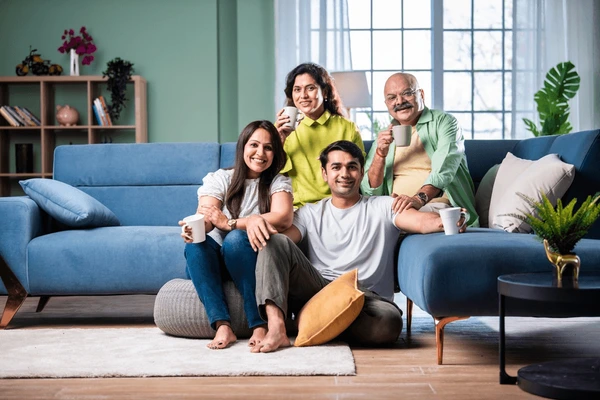
Thinking about moving to a retirement home is a big step. It often means looking forward to a lifestyle with more comfort, freedom, and support. At the same time, it is also a change—and like any change, it can bring a mix of emotions for both you and your family. That is why involving your loved ones in the process is so important. When you include them in your plans, you help everyone feel more comfortable and more confident about what comes next. Here are some easy and thoughtful ways to make sure your family is part of your decisions: Start with open and honest communication 1. Start the conversation early Try to begin the discussion as soon as the idea of retirement living enters your mind. Waiting until plans are final might lead to surprise or confusion. An early conversation gives everyone time to ask questions and adjust to the idea at their own pace. 2. Share your thoughts and reasons Talk about what is drawing you towards this change. Whether it is the appeal of living in a community, letting go of home maintenance, or enjoying social activities, being honest about your goals helps others understand your decision better. 3. Invite their input Encourage your loved ones to share how they feel. They may have practical questions or emotional concerns. By listening to their perspective and having open discussions, you can help everyone feel more at ease and part of the journey. Make it a collaborative process While the final decision is yours, working together as a family can make the experience more comfortable and positive for everyone involved. 1. Share what you are learning Keep your family informed as you explore your options. Talk about the retirement homes you have visited, the facilities you liked, and how you felt about the environment. Sharing brochures, websites, and details can help them understand your preferences and offer more meaningful support. 2. Accept practical support Your family can also assist with the move, which can make the experience smoother and less stressful. If possible, take a family member along when you visit potential retirement communities. They may notice things you miss or ask questions that have not occurred to you. Their presence can also offer emotional support during the decision-making process. 3. Involve them in the move Packing and preparing for the move can be a meaningful time to spend with loved ones. Sorting through belongings, sharing memories, and planning your new space can turn what might feel like a task into a shared experience. Handle emotions with care A big change like this can bring up many emotions—for both you and your family. 1. Acknowledge their feelings Understand that your family might feel uncertain, protective, or even sentimental about the change. Let them know that their feelings are valid and appreciated. Your sensitivity can help ease their minds. 2. Highlight the positives Focus on what retirement living offers—more time for activities you enjoy, opportunities to meet new people, a safer environment, and less day-to-day responsibility. Help your family see that this move is about living well and staying connected. 3. Stay connected
Read MorePreparing your home for sale before moving to a retirement home
May 30, 2025
Categories : Retirement living | Senior Living

Moving to a retirement home often marks a meaningful and exciting new chapter in life. It brings opportunities for comfort, companionship, and a lifestyle tailored to one’s needs. However, before settling into this new environment, many seniors in India must address an important step—selling their current home. Here, we share practical steps that can help ensure a smooth and successful home sale: 1. Start early and plan strategically The selling process can take time, and it is wise to begin preparations well in advance. A proactive approach allows seniors to avoid rushed decisions and gives them the freedom to explore their options thoughtfully. Understand the market Seniors should begin by gaining a clear understanding of the local property market. Reviewing recent sales of similar homes in the same area provides insight into a fair and realistic asking price. Market conditions can vary widely, so it is important to base decisions on reliable, up-to-date information. Seek professional guidance Working with a qualified real estate agent who has experience in the local market can be useful. An agent can help with pricing, marketing, negotiations, and paperwork. Seniors may also find it helpful to work with someone who understands their needs and communicates in a patient and respectful manner. 2. Declutter and simplify Creating a welcoming and spacious environment allows potential buyers to better imagine themselves in the home. Clear excess items Seniors should consider removing unnecessary items. This helps highlight the size and potential of each room. It may also be a meaningful time to sort through belongings and decide what to keep, gift, donate, or store. Enhance exterior appeal First impressions often influence a buyer’s decision. Simple improvements to the exterior can create a positive and lasting impact. Basic tasks such as cleaning windows, mowing the lawn, or planting flowers can create a more attractive and inviting entrance. A neat exterior suggests that the home has been well cared for over time. Address minor repairs Fixing small issues can significantly improve the overall impression of the home. Seniors should attend to minor repairs such as chipped paint, leaky taps, or loose fixtures. These small efforts can contribute to a sense of quality and attention to detail, which may influence a buyer’s confidence. Staging the home Arranging the furniture neatly and keeping the decor simple can help make each room look its best. A clean and neutral look allows more buyers to imagine the home as their own. 3. Prepare legal and financial documents Having all necessary paperwork in place is crucial for a smooth transaction. Gather required documents Seniors should ensure they have access to all relevant documents, such as the property deed, title papers, tax receipts, and maintenance records. If any documents are missing, they should take steps to recover them through the appropriate authorities or legal support. Understand the financial aspects It is important to be aware of taxes, fees, and other costs involved in selling property. These may include capital gains tax, stamp duty, or legal charges. Seniors may benefit from speaking with a financial advisor or chartered accountant to ensure full clarity. Selling a home is both a practical step and an emotional one. With careful planning, reliable guidance, and a clear understanding of the process, seniors can prepare their property with confidence. Taking these steps not only supports a successful sale but also helps create a smoother transition into a retirement community—one that promises comfort, care, and a new beginning. Looking for senior luxury housing communities that promote comfort, well-being, and an active lifestyle? Explore our retirement homes. They are thoughtfully created for those who value independence, security, and refined living. These communities are designed to support an active retirement lifestyle with high-quality amenities and opportunities for meaningful engagement. From well-appointed living spaces and wellness facilities to cultural programmes and social activities, every detail aims to enhance daily life. To know more, call us at +91-8884555554.
Read MoreHow to choose between different retirement housing options?
May 29, 2025
Categories : Retirement living | Senior Living

Planning for retirement opens up the opportunity to create a lifestyle that brings comfort, convenience, and a strong sense of community. One of the key decisions in this stage is selecting the right place to live. With several thoughtfully designed retirement housing options now available in India, seniors can choose a setting that matches their preferences and supports their evolving needs. Here, we share different types of retirement housing options and provide helpful tips for making a well-informed choice. Common types of retirement housing options Retirement housing options are designed to support varying levels of independence and personal care. Here are the main types to consider: Retirement housing communities This option suits seniors who manage their daily routines independently but wish to enjoy the benefits of living in a community. These retirement communities often provide services such as housekeeping, dining, and engaging activities. Residents can explore hobbies such as music or painting through scheduled workshops and events. It is a setting that supports freedom while offering comfort and convenience. Assisted living Assisted living is suited for those who benefit from some support with tasks such as bathing, dressing, or managing medication. This option ensures residents feel secure and supported, while still enjoying their own space and routines. Friendly staff members are always available to lend assistance as required. Nursing care homes For those who require regular health monitoring and personal care, nursing care homes provide professional support throughout the day and night. These homes are equipped to manage a range of health and wellness needs with dedicated medical staff and suitable infrastructure. Consider important factors when choosing Seniors should take time to explore their options and reflect on what matters most to their lifestyle and needs. Here are a few key factors to consider: Location Seniors should consider communities that are located near family, friends, and trusted healthcare providers. Being close to loved ones and medical support can offer reassurance and help maintain strong social ties. Amenities and services Seniors should review the services and features offered by each community. Spaces such as gardens, fitness centres, libraries, and areas for spiritual reflection may add comfort and meaning to daily life. Choosing a place that offers activities aligned with personal interests helps support an active and satisfying lifestyle. Safety and security Seniors should ensure the community includes essential safety features such as 24X7 security, well-lit surroundings, professional staff available at all hours, and emergency support systems. Social environment Seniors should look for a setting that encourages connection and a genuine sense of belonging. A strong social environment plays a key role in emotional wellbeing and overall quality of life. Friendly conversations, shared meals, group activities, and community events can bring joy and add structure to the day. Helpful steps in the decision process Involve family in discussions: Speaking with family members offers insight and reassurance. Their perspective may help clarify practical considerations. Visit communities in person: Touring different options allows seniors to experience the environment, meet the staff, and learn more about daily life in the community. Ask clear and open questions: Speaking directly about services, care options, fees, and policies provides a full picture and builds trust. Looking for more information on retirement housing communities that support active ageing? Explore our thoughtfully designed senior living community where wellness, independence, and social connection are part of everyday life. The community encourages residents to take part in meaningful activities, explore hobbies old and new, and maintain a strong sense of purpose. Whether through fitness sessions, creative workshops, or cultural gatherings, there are endless ways to stay involved and connected. With safety measures in place and assistance readily available, residents and their families enjoy lasting peace of mind. To know more, call us at +91-8884555554.
Read MoreTop Articles
- 10 Questions to Ask When Touring Senior Citizen Homes in India
- 15 Meaningful Things to Do After Retirement
- 4 Factors that Should Define Your Retirement Planning Strategy: Tips from The Largest Senior Living Community Operator
- 4 Power Foods for Older Adults: List Curated By the Largest Senior Living Community Operator
- 4 Tips from a Senior Living Community for Mindful Self-care and Better Health
Tags
- Retirement homes in India
- Senior citizen homes in India
- Retirement homes in Chennai
- Senior citizen homes in Coimbatore
- Retirement homes in Coimbatore
- Senior living homes in Bangalore
Categories
- Ageing tips
- Articles
- Average cost of retirement home per month
- Birthday parties at retirement homes
- Blog
- Blogs by our residents